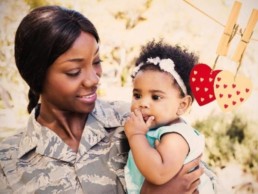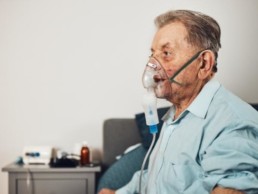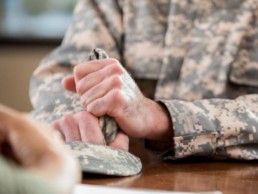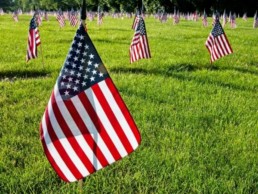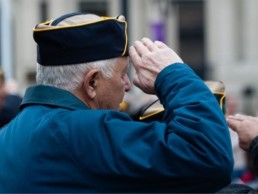Doing right by Ms. Wright
In March 2020, as the deadly coronavirus quickly spread all over the world, the Purple Heart Foundation started to pivot it’s focus on programming to better help the veterans being affected by the pandemic. 43 of the 50 states, that make up these United States of America, shut down and/or issued a stay-at-home order to prevent the virus from spreading to more people quicker. However, these necessary health precautions made it difficult for businesses to keep paying their employees, or even to stay open much longer. Many businesses closed or downsized, causing the unemployment rate to reach unprecedented levels for most tradesman and service-related jobs…ideal jobs veterans sought out in order to utilize their skills, work with their hands, and start new careers after their service. Once these statistics became clear, the Veteran Assistance Grant program was born.
The Purple Heart Foundation’s Veteran Assistance Grant program was created to cover emergency debts a veteran might be facing due to the extreme circumstances created by the coronavirus pandemic. The program was designed to bridge the gap for veterans in-need.
For example, U.S. Air Force disabled veteran, Ms. Wright, became unemployed in April 2020 due to the coronavirus pandemic. Her car was inoperable, and she couldn’t afford to fix it and continue to pay for Uber rides to and from interviews and the grocery store while she looked for work. The Purple Heart Foundation was able to collect all Ms. Wright’s information regarding her situation and approve her for a Veteran Assistance Grant to help pay for her car repairs. Ms. Wright can now search for employment and still meet her other monetary responsibilities without spreading herself too thin, financially or otherwise.
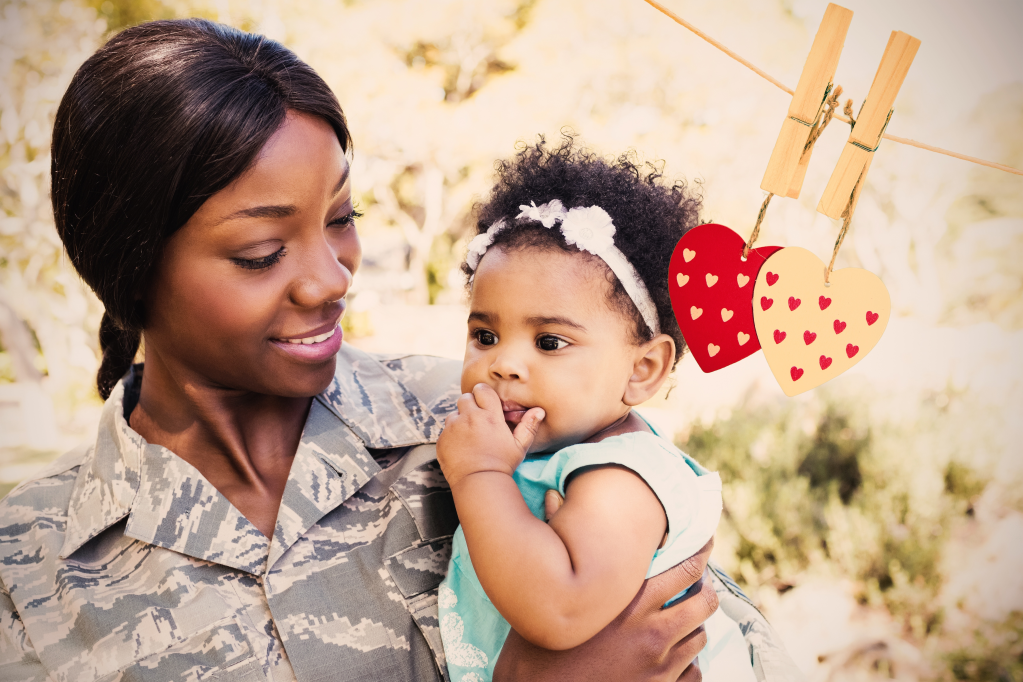
After receiving her grant, we caught up with Ms. Wright and this is what she had to say:
“Thank you for not only awarding this amount, but thank you for being there for veterans in their times of need. Feeling unsure about what’s going to happen with my car, this amount awarded allowed me the security of being able to maintain having a car, which is a critical part of accomplishing daily needs. Even though these circumstances affect everyone in our country, it’s an honor to know we can be there for each other even during a pandemic.”Ms. C. Wright (Las Angeles, CA)
The Purple Heart Foundation does not receive government funds and relies 100% on donations from supporters like you. This holiday season, with coronavirus numbers peaking again, we expect even more veterans in situations like Ms. Wright’s will need your help. The Veteran Assistance Grant could prevent veterans from becoming homeless in these cold winter months or prevent a veteran from having to choose between keeping the lights on or putting food on the table.
With your gift of $25, $50, $100, $250 or more, you could help more veterans like Ms. Wright feel the security of having a support system to tackle the struggles they are facing during these difficult times.
Help make this holiday season a little easier for a veteran facing hardships. Or, if you (or someone you know) are a veteran facing a similar situation, please apply for assistance with the Purple Heart Foundation today.
Recognizing Our Veterans This Mesothelioma Awareness Day
This September 26th marked the 17-year anniversary of Mesothelioma Awareness Day. This is a day devoted to spreading awareness about this rare and extremely aggressive form of cancer. What many do not know is that mesothelioma is one of the few non-genetic forms of cancer and is usually spoken in tandem with asbestos. Asbestos is the only known culprit of mesothelioma and was heavily used throughout the military from the early 1900s up until the 1980s. Unfortunately, its past use in the military has led to emerging mesothelioma cases today, with roughly 900 new mesothelioma diagnoses annually among our veteran population.
Exposure In The Air Force
For veterans of the Air Force, exposure to asbestos most likely happened on actual Air Force bases. Insulation, wall board, piping, plumbing, sealers, and adhesives were known to contain this carcinogen. Servicemen and women most at risk of exposure were the ones who lived on these bases with their families.
Planes used by the Air Force also contained asbestos in some parts, such as the heat shield, engine, and brake pads. Aircraft mechanics were put at risk as these parts began to wear down and fibers were released into the air. Secondhand exposure was also a risk, as asbestos fibers cling to the clothes. This means that mechanics could have been carrying asbestos off the job site, unknowingly exposing their families when they came home from work for the day.
Exposure In The Coast Guard
Those who served in the Coast Guard were mostly likely to come into contact with asbestos while on shipyards and on ships. Coast Guard Cutters were likely to be harboring asbestos in many different areas of the ship. Pump rooms, boiler rooms, sleeping quarters, and mess halls all could have had asbestos-containing materials (ACMs) present. The close quarters type of living on these vessels allowed for asbestos fibers to travel easily to other areas of the ship, potentially exposing everyone on board. The height of exposure for Coast Guard personnel was during World War II, where usage and production of asbestos was at its peak.
Exposure In The Army
Similar to the Air Force, Army personnel had a high risk of exposure when on Army bases. Insulation, floor tiles, roofing, and cement incorporated this carcinogenic mineral not only because of its fire-resistant qualities, but because it was so cheap. Off-site locations known as Army reserves were also prone to the usage of asbestos. In 2005, the Environmental Protection Agency (EPA) reported that there were still ACMs that needed to be abated from these locations.
Army vehicles also utilized asbestos in some parts that would experience high temperatures and friction. This posed a risk to Army mechanics whose job required them to repair brake pads, gaskets, and clutch plates on vehicles used in combat and transport.
Exposure In The Navy
Navy veterans are the most likely of all military personnel to develop an asbestos-related disease. This is due to the fact that asbestos was most heavily used among this branch of the military. Cruisers, destroyers, aircraft carriers, submarines, and more were often built with ACMs. Asbestos was primarily used in the insulation of these vessels and was also favored because it does not deteriorate easily when in contact with water. The servicemen and women involved in the building, repairing, and retiring of these ships were the ones who most likely were exposed, as the ACMs would degrade overtime.
Exposure In The Marines
Much like the Navy and Coast Guard, veterans of the Marines were also put at risk by being on and working with ships. Marines are often aboard Navy ships being transported to and from conflict areas. While being transported, they carry out maintenance tasks the same as any Navy member would. These duties may involve repairing gaskets or removing insulation, which can disturb and release asbestos. Unfortunately, many of the high-risk ships used throughout World War II and the Vietnam War are still a part of the Navy’s fleet today.
Spreading Awareness
With mesothelioma continuing to affect so many veterans every year, the Purple Heart Foundation believes it is imperative to increase awareness of this disease. This cancer could be diagnosed less, or even disappear, if we are vigilant in protecting ourselves and our military population from asbestos exposure.
Raising Awareness About Post Traumatic Stress
In WWI it was called Shell Shock; in WWII, Battle Fatigue. Korean War veterans were diagnosed with War Neurosis, and Vietnam vets with Post-Vietnam Syndrome. Whatever you call it, Post Traumatic Stress (PTS), as it’s now known, continues to affect hundreds of thousands of veterans.
Today is PTSD Awareness Day, a day to speak up about post-traumatic stress, a condition that’s underreported, misdiagnosed, and, so often, misunderstood.
PTS BY THE NUMBERS:
- 10-13% of combat veterans experience post-traumatic stress in their lifetimes.
- Studies estimate that 1 in 5 military personnel returning from Iraq and Afghanistan has PTS.
- PTS affects to 20% of Operation Enduring Freedom and Operation Iraqi Freedom veterans; 10% of Gulf War veterans, and 30% of Vietnam War veterans.
- 17% of combat troops are women; 71% of female military personnel develop PTS due to sexual assault within the ranks.
- The number of diagnosed cases of PTS in the military jumped 50% in the past year.
SEPARATING MYTH FROM FACT
The psychological scars of post-traumatic stress may be invisible, but its manifestations are not. Left untreated, it can lead to depression, drug and alcohol abuse, or suicide. Despite its prevalence, post-traumatic stress is often ignored, misinterpreted, and sensationalized by the media.
Listening to the stories of veteran experiencing post-traumatic stress can help us separate myth from fact.
MYTH: People begin experiencing PTS immediately after a traumatic event.
FACT: Sometimes symptoms surface months or years after a traumatic event or returning from deployment.
“ I was sober and clean almost 11 years, and I just couldn’t handle it no more, you know, my life. I couldn’t hold a job. I always had problems sleeping…very irritable, the whole bit. Plus, my family was always telling me I should go get some help.”
US Navy ((1971 – 1972))
SN, Ammunition Transporter
Vietnam
MYTH: Service members can never fully recover from PTS.
FACT: When people seek help and maintain a treatment program, post-traumatic stress symptoms can be managed or overcome entirely.
“My ability to overcome the situations that cause me to act negatively and not beneficial to me, are up to me, and I continue to seek treatment. I want to make a choice, not have my depression make the choice.”
The Honor of a Warrior – Staff Sgt. Edward Allen Carter, Jr.
Edward Allen Carter, Jr.
1916 – 1963
As Black History Month comes to an end, the Purple Heart Foundation honors the exemplary heroism, unmatched determination and commendable bravery of a young African American soldier. His actions were profound for a soldier of any race, religion, gender or creed but to happen during a time of segregation and discrimination, they are especially praiseworthy.
Lets begin at the beginning….Edward Allen Carter, Jr. was born on May 26, 1916, in Los Angeles California, but was raised in Shanghai, China. Carter knew he was destined to join the military from a young age. He attended military grade-school in Shanghai and studied languages until he became fluent in Hindi (his mother’s native tongue), Mandarin (the language of Shanghai), as well as English and German which he would later use in his military career. He began that career at the young age of 15, enlisting in the Chinese Nationalist Army. He rose to the rank of lieutenant before it was uncovered that he was underage and was discharged.
Once he turned 18, Carter attempted to join the U.S. Army but was not accepted due to discrimination. So Carter remained in Europe in the late 1930s, fighting for the Loyalists in the Spanish Civil War. He fought as a Corporal in the Lincoln Brigade until they were forced to flee to Paris in 1938. Upon his return to the United States in 1941, Carter once again attempted to join the U.S. Army and was finally accepted. He was quickly promoted to staff sergeant because of his extensive military experience.
During training in the segregated state of Georgia, Carter witnessed violence and discrimination upon African American soldiers. Many of whom were dishonorably discharged when they fought back. In order to remain in the military, Carter accepted multiple demotions in an era when African Americans were rarely allowed to be officers or even participate in combat. Racism proved to be a hindrance in Carter’s journey to follow his destiny. He volunteered to go into combat but was denied because at the time, African Americans were considered unsuitable for battle.
In 1945 however, replacements were desperately needed, so Carter once again gave up his staff sergeant stripes to volunteer as a Private and was assigned to the 56th Armored Infantry Battalion of the 12th Armored Division. Company commander, Captain Floyd Vanderhoff, recognized Carter for his experience and leadership by restoring his staff sergeant stripes and making him an infantry squad leader.
While fighting with the 12th Armored, Carter became a member of General Patton’s “Mystery Division”. He served as Patton’s personal bodyguard in the push into Germany where his actions in battle earned him a recommendation for the Medal of Honor, the highest award for valor, on March 23, 1945. Carter received the Combat Action Ribbon, the Purple Heart for the wounds he sustained in action, but due to his race he was awarded the Distinguished Service Cross, the country’s second highest military honor, instead of the Medal of Honor.
After the war, Carter was promoted to sergeant first class, but his enlistment was near expiration. During this time the Red Scare was in full effect, and therefore Carter’s request for re-enlistment had been denied due to fear that he may have communist ties from his exposure in China. He received an honorable discharge in October 1949 and lived out the remainder of his life as a family man until he passed away on January 30, 1963 at the age of 46.
Three decades later, a commission was assigned to identify unrecognized African-American heroes from World War II. Ten men were cited to receive the Medal of Honor. Edward Allen Carter Jr. was identified and recommended for honors for his actions fifty-two years after voluntarily leading a three-man group across an open battlefield. Edward Allen Carter, III received the Medal of Honor on behalf of his grandfather from President Bill Clinton on January 13, 1997. His citation read…
“For extraordinary heroism in action on 23 March 1945, near Speyer, Germany. When the tank on which he was riding received heavy bazooka and small arms fire, Sergeant Carter voluntarily attempted to lead a three-man group across an open field. Within a short time, two of his men were killed and the third seriously wounded. Continuing alone, he was wounded five times and finally forced to take cover. As eight enemy riflemen attempted to capture him, Sergeant Carter killed six of them and captured the remaining two. He then crossed the field using as a shield his two prisoners from which he obtained valuable information concerning the disposition of enemy troops, in their native tongue. Staff Sergeant Carter’s extraordinary heroism was an inspiration to the officers and men of the Seventh Army Infantry Company Number 1 (Provisional) and exemplify the highest traditions of the Armed Forces.”
Against all odds, Edward Allen Catrer, Jr. fought for what was right and followed his destiny. The Purple Heart Foundation Salutes Staff Sgt. Edward Allen Carter, Jr. for service and sacrifice. This Black History Month join us in honoring all service men and women who bravely follow their destiny in the eyes of discrimination and adversity.
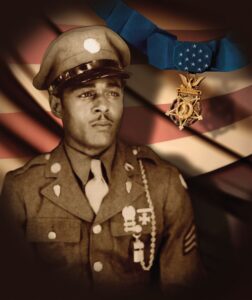
Spreading Holiday Love
The spirit of giving brings us together, whether it’s giving Christmas presents under the tree or giving back in your community.
In an effort to spread holiday cheer, Purple Heart Foundation staff volunteered on Saturday, December 21, 2019 to serve a holiday meal and distribute care packages to homeless veterans at the Department of Veteran Affairs Community Resource & Referral Center, in Washington D.C., driven by the sole purpose, “to holistically enhance the quality of life of all veterans.”
It hurt to see the necessity in our own community; just think how many more homeless veterans are out there? As passionate employees of the Purple Heart Foundation that work hard to help as many veterans as possible, thoughts like this hit close to home. Our heroes deserve the very best after everything they’ve sacrificed.
Here’s what our volunteers said about their humble service on Saturday:
“It was a very positive experience. It felt really good to give back to those veterans who served” – Mitchell Theis
“The VA staff members had wonderful holiday spirit and I look forward to doing more volunteer work next year.” – Berhanu Adamu
The Purple Heart Foundation’s Marketing Manager, Amelia Kakar, said “It was very fulfilling to see all the veterans savoring the holiday meal we served, and to see their smiles as they opened our care packages. I’m also very proud of our staff who volunteered on a weekend to not only serve a holiday meal and distribute care packages but to bring hope, kindness and joy to homeless veterans who may not have been able to celebrate Christmas with family and friends this year. The experience was inspiring. My goal, as we move into a new decade, is to coordinate more experiences like this for our staff and corporate partners all over the country to work directly with their local veterans too.”
Purple Heart Foundation employee, Bianca Meruvia, has been volunteering since childhood with her mother, Luisa Meruvia, who also volunteered Saturday. Bianca said she chose a non-profit career path because “helping those in need fills my heart with joy. At one point in life I was in their position and I’m not ashamed because it made me the person I am today. I’m truly grateful for every little thing in life and everyone in it because when I needed help someone was there for me. I want them to know that I will be there for them and they’re not alone… especially at this time, which tends to be the hardest. It made me so happy to see the smiles on their faces.”
The staff enjoyed their experience giving back. Hands-on experiences such as this can be life changing for both the giver and receiver. Your support of the Purple Heart Foundation as we transition into 2020 will allow us to continue creating life changing experiences for our nation’s heroes. Donate by 11:59pm on New Years Eve USING THIS LINK, and our partners at Nexen Tire will double your donation!
Social Security Benefits & Veterans
How to Qualify for Social Security Disability Benefits the Same Time as VA Benefits
If you are a veteran who is disabled, you may qualify for both Veterans Administration (VA) benefits and Social Security Disability Insurance (SSDI) administered through the Social Security Administration (SSA). While both are disability programs administered by government agencies, both programs have very different criteria that must be met for an applicant to be approved for benefits. You can qualify for both VA benefits and SSDI if you meet the specific criteria established for both programs.
You can have pending applications with both agencies at the same time, or you might be approved for one program and awaiting approval for the other. VA benefits are provided for disabilities related to your military service only, and you don’t have to be totally disabled. Your VA benefits are based on the severity of your service-related disability and the compensation rating it receives.
Because there aren’t financial requirements that must be met to receive VA benefits, you can receive VA benefits along with another form of disability benefits at the same time. To receive SSDI, you must have worked enough to earn adequate credits – usually this is the equivalent of 5 years full-time out of the last 10 years. You must be completely disabled for at least a year, or have a condition expected to result in death. All your medical issues are considered together – regardless of whether they are related to your military service or not.
The Disability Approval Process
The VA will review your medical records associated with your military service. If you get approved for VA benefits first, it will not necessarily help your SSDI claim. At one time, getting a high compensability rating from the VA, such as 70 percent or more, would lead to additional consideration. The new regulations published by the SSA in 2017 indicate that the SSA will not take VA benefit approvals into consideration for an SSDI application, but the SSA will review any evidence the VA considered when making their decision. The SSA will use Department of Defense (DOD) or VA evidence to expedite SSDI claims for veterans who are Wounded Warriors or who have a 100% compensability rating through the VA.
The VA doesn’t give special deference to an approval for SSDI, the VA Is required by law to consider the records that the SSA had to review regarding your condition. The medical records reviewed by the SSA could prove beneficial by offering key evidence that might help the VA render a favorable decision for your claim. While you could have a lower compensability rating – such as 5% or 10% through the VA – you could be declared fully disabled by the SSA. The SSA will consider your service-related disability, such as a back problem or lung disease, and they will also consider medical problems not associated with your military service, such as arthritis, cancer, diabetes, and heart problems.
The Application Process
If you have applied for VA benefits, you should also apply for SSD. SSDI benefits are based on the claimant’s work history – so your eligibility also relies on the credits you have earned from working. In most instances, you must have worked 5 years full-time out of the last 10 years. If you wait too long, you will start losing credits and you will become ineligible for SSDI. The application process for Social Security disability benefits is fairly straightforward. You have the option of applying online on the SSA’s website or you can do so in person at a Social Security office. After you send in your application, you should hear back from the SSA regarding your claim within three to five months.
Resources Found Via:
- https://www.va.gov/
- https://www.ssa.gov/disability/
- https://www.ssa.gov/
- https://www.disabilitybenefitscenter.org/glossary/social-security-disability-work-credit
- https://www.disabilitybenefitscenter.org/blog/disability-benefits-warrior-transition-unit-program
- https://www.ssa.gov/applyfordisability/
- https://secure.ssa.gov/ICON/main.jsp
Whiskey With A Cause: The Glenlivet 14 Year Old
The Purple Heart Foundation is solely dedicated to serving our nation’s heroes and The Glenlivet has joined our cause!
The Glenlivet is commemorating Purple Heart Month by partnering with the Purple Heart Foundation to introduce the brand new 14-Year-Old single malt scotch whiskey, in honor of our heroes. You still have time to buy a bottle of this newly crafted sing malt scotch whisky. Every purchase benefits the Purple Heart Foundation! For every bottle of The Glenlivet 14-Year-Old sold at participating retailers from July 1 to December 31, 2019, The Glenlivet will donate $1 to the Purple Heart Foundation, with a minimum guaranteed donation of $50,000, up to $100,000! The Glenlivet’s generosity will help the Purple Heart Foundation enhance the quality of life for thousands of veterans and their families across the country.
We invite you to buy a bottle of The Glenlivet 14-Year-Old and raise your glass in honor of all our heroes. Your purchase or donation will make a difference, and it will help us fund resources and programs that are so desperately needed by our veterans today. Anyone (over 21) can still honor a Purple Heart recipient this Purple Heart Month by purchasing a bottle of The Glenlivet 14-Year-Old from your local participating retailer this August!
To read more about The Glenlivet in the official press release, please click HERE.
To buy a bottle of The Glenlivet 14 Year Old, please click HERE.
To DONATE to the Purple Heart Foundation, please click HERE.


